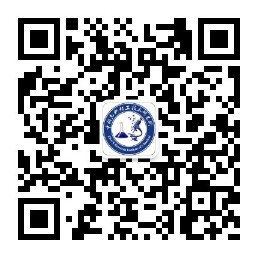欢迎访问中科光析科学技术研究所官网!
- 联系我们
- 关注微信

欢迎访问中科光析科学技术研究所官网!

免费咨询热线
400-635-0567|
婴儿弹椅检测项目报价? 解决方案? 检测周期? 样品要求? |
点 击 解 答  |
本文件规定了承载式安抚器具的技术要求、标识和使用说明,并描述了承载式安抚器具的测试方法。本文件适用于设计和预定用于以一定倾斜角度承载婴幼儿,用机械或非机械方式驱动,通过任意方向的弹跳、摇动或摆动而获得情绪安抚的产品,包括婴儿弹椅、婴儿摇椅、婴儿秋千及其组合或转换型产品。本文件也适用于符合GB 27887且根据制造商说明可以用作承载安抚器具的0/0+组儿童汽车安全座椅产品。本文件不适用于儿童游戏活动中心。
本标准规定了卫生行业医疗器械、仪器设备(商品、物资)的分类与代码。 本标准适用于卫生行业各医疗、教学、科学研究和生物制品等单位对物资管理、计划、统计及会计业务等使用。
1.1 This consumer safety specification covers establishment of requirements, test methods, and marking requirements to promote safe use of an infant bouncer seat by an occupant and a caregiver. 1.2 For purposes of this consumer safety specification, an infant bouncer seat is a freestanding product intended to support an occupant in a reclined position to facilitate bouncing by the occupant, with the aid of a caregiver or by other means. Intended occupants are infants who have not developed the ability to sit up unassisted (approximately 0 to 6 months of age). 1.3 This consumer safety specification is intended to minimize the risk of injury to an occupant resulting from normal use and reasonably foreseeable misuse or abuse of an infant bouncer seat. 1.4 No infant bouncer seat produced after the approval date of this consumer safety specification shall, either by label or other means, indicate compliance with this specification unless it conforms to all requirements contained herein. 1.5 This consumer safety specification is not intended to address incidents and injuries resulting from the interaction of other persons with the occupant in an infant bouncer seat or the incidents resulting from abuse or misuse by other children. 1.6 The values stated in inch-pound units are to be regarded as standard. The values given in parentheses are mathematical conversions to SI units that are provided for information only and are not considered standard. 1.7 The following precautionary caveat pertains only to the test method portion, Section 7, of this consumer safety specification: This standard does not purport to address all of the safety concerns, if any, associated with its use. It is the responsibility of the user of this standard to establish appropriate safety and health practices and determine the applicability of regulatory requirements prior to use.
1.1x00a0;This consumer safety specification covers establishment of requirements, test methods, and marking requirements to promote safe use of an infant bouncer seat by an occupant and a caregiver. 1.2x00a0;For purposes of this consumer safety specification, an infant bouncer seat is a freestanding product intended to support an occupant in a reclined position to facilitate bouncing by the occupant, with the aid of a caregiver or by other means. Intended occupants are infants who have not developed the ability to sit up unassisted (approximately 0 to 6 months of age). 1.3x00a0;This consumer safety specification is intended to minimize the risk of injury to an occupant resulting from normal use and reasonably foreseeable misuse or abuse of an infant bouncer seat. 1.4x00a0;No infant bouncer seat produced after the approval date of this consumer safety specification shall, either by label or other means, indicate compliance with this specification unless it conforms to all requirements contained herein. 1.5x00a0;This consumer safety specification is not intended to address incidents and injuries resulting from the interaction of other persons with the occupant in an infant bouncer seat or the incidents resulting from abuse or misuse by other children. 1.6x00a0;The values stated in inch-pound units are to be regarded as standard. The values given in parentheses are mathematical conversions to SI units that are provided for information only and are not considered standard. 1.7x00a0;The following precautionary caveat pertains only to the test method portion, Section 7, of this consumer safety specification: This standard does not purport to address all of the safety concerns, if any, associated with its use. It is the responsibility of the user of this standard to establish appropriate safety and health practices and determine the applicability of regulatory requirements prior to use.
 前沿科学
微信公众号
前沿科学
微信公众号
 中析研究所
抖音
中析研究所
抖音
 中析研究所
微信公众号
中析研究所
微信公众号
 中析研究所
快手
中析研究所
快手
 中析研究所
微视频
中析研究所
微视频
 中析研究所
小红书
中析研究所
小红书